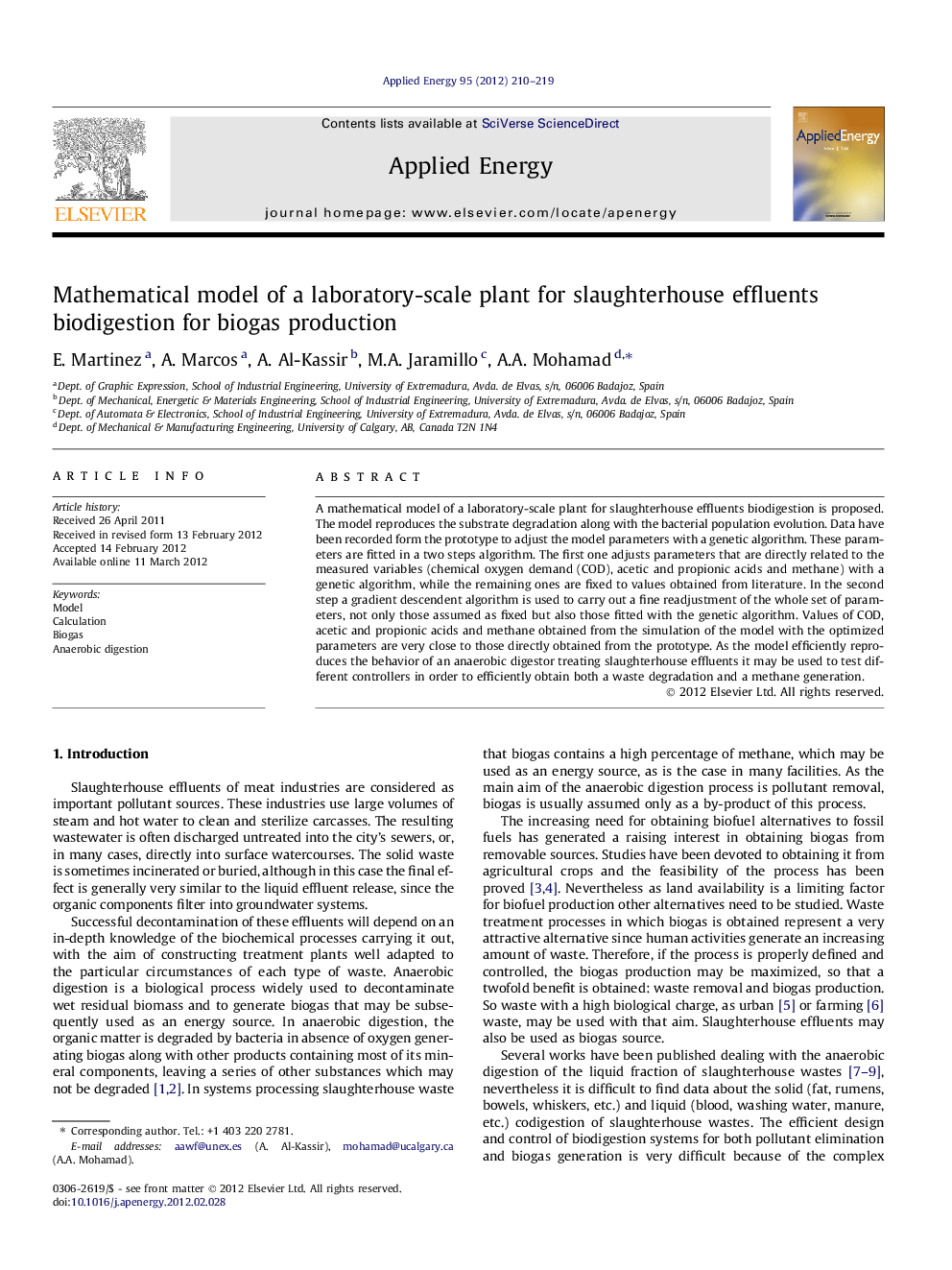| Article ID | Journal | Published Year | Pages | File Type |
|---|---|---|---|---|
| 243691 | Applied Energy | 2012 | 10 Pages |
A mathematical model of a laboratory-scale plant for slaughterhouse effluents biodigestion is proposed. The model reproduces the substrate degradation along with the bacterial population evolution. Data have been recorded form the prototype to adjust the model parameters with a genetic algorithm. These parameters are fitted in a two steps algorithm. The first one adjusts parameters that are directly related to the measured variables (chemical oxygen demand (COD), acetic and propionic acids and methane) with a genetic algorithm, while the remaining ones are fixed to values obtained from literature. In the second step a gradient descendent algorithm is used to carry out a fine readjustment of the whole set of parameters, not only those assumed as fixed but also those fitted with the genetic algorithm. Values of COD, acetic and propionic acids and methane obtained from the simulation of the model with the optimized parameters are very close to those directly obtained from the prototype. As the model efficiently reproduces the behavior of an anaerobic digestor treating slaughterhouse effluents it may be used to test different controllers in order to efficiently obtain both a waste degradation and a methane generation.
► A mathematical model of a laboratory-scale plant for slaughterhouse effluents biodigestion has been developed. ► The model is adjusted with a genetic algorithm. ► A prototype has been built and used to treat these effluents. ► The model reproduces the behavior of an anaerobic digestor treating slaughterhouse effluents to generate methane.
